
If I had to pick a favourite harbinger of spring I think it would have to be the flowers of Lesser Celandine (Ficaria verna). I spotted my first one in bud on the shady banks of the Laugherne Brook during the New Year Plant Hunt but I had to wait until 8th February to see one in full bloom – a tiny yellow star shining out amongst a sea of green on a roadside verge beside the River Severn. As the weeks went by, more and more pockets sprung up, and now great golden swathes blanket almost every bank, verge, ditch and wayside. If you look closely, you will notice a wide variation amongst these flowers, some with just eight petals, others as many as 12. They must surely have the sunniest disposition of any wildflower; I cannot look upon them and not feel cheerful.
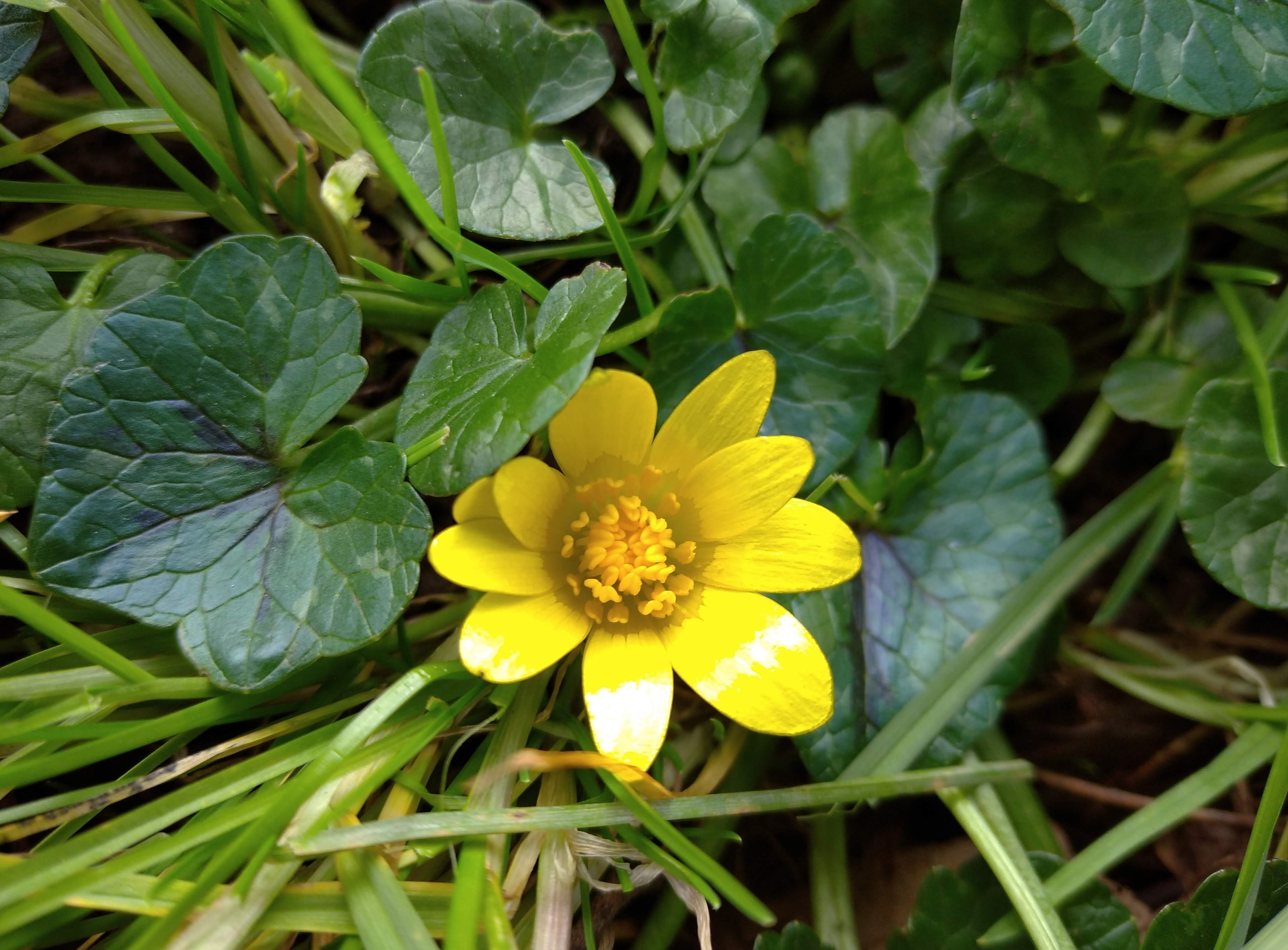


It was the same with Sweet Violets (Viola odorata); their numbers swelling from one solitary bloom in early February to vast purple carpets in just a week or so. Recently, on the way back from a playgroup with some other mums, I noticed several patches of Dog Violets (Viola riviniana) growing in cracks in the tarmac in front of a corner shop. I parked the pushchair, occupied Josephine with a banana, and stooped to get a closer look. The name ‘dog’ means ‘normal’ or ‘ordinary’ and refers to the lack of scent, but with their pale lilac petals and pretty branched veining, I prefer dog violets to their sweet-scented cousins. I couldn’t be sure whether these were Common or Early Dog Violets as they seemed to share some of the characteristics of both plants. One thing that was confirmed, however, was the other mums’ suspicions that I was a little odd…


Smaller and harder to spot, but just as lovely, are the flowers of Common Whitlowgrass (Erophila verna). These opportunistic dainty white flowers are currently cropping up in little cracks in pavements, walls, bus stops, driveways and car parks everywhere, adding a delicate sprinkle of springtime joy for those who care to look down.
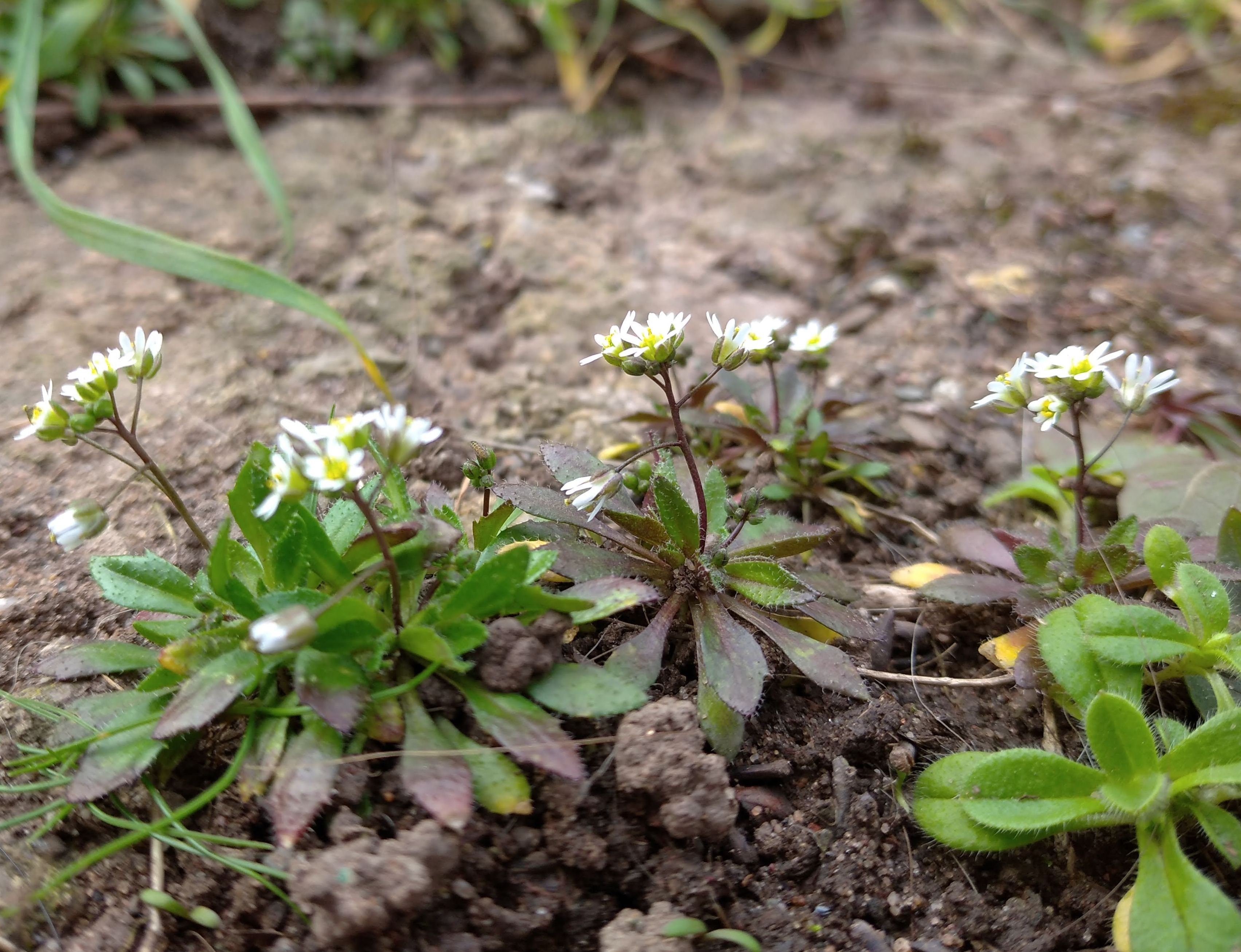
Since moving to Worcester, I’ve welcomed familiar wildflower friends that I knew from London, such as Hairy Bittercress and Shepherd’s Purse – both members of the Brassica or Cabbage family – and made the acquaintance of a new one: Thale or Mouse-Ear Cress. Not so very long ago, I, like most people, had ‘plant blindness’ when it came to wayside wildflowers, noticing only a vague green fuzz in my peripheral vision as I rushed by. So it is tricky to know whether this plant is more common in the Midlands or just that I could not distinguish it from other Brassicas until now. It is fond of growing beside walls and its white flowers droop prettily before forming long seed-pods. Interestingly, it was the first-ever plant to have its genome sequenced.

Another wildflower that I had never seen before moving to Worcester is Borage (Borago officinalis). A great big clump of it grows on a roadside verge behind a railing on the way to Gwendolyn’s school. I’m glad the railing is there because it protects the borage from council mowers and strimmers. (Some Common Fumitory growing on the other side of the railing recently got the chop.) Borage belongs to the same family as Forget-Me-Nots, Lungwort and Viper’s Bugloss, and also goes by the prettier name of Starflower. Native to the Mediterranean, it has become naturalised in the UK and is beloved by bees. Its flowers and leaves are edible too, with the former being used as a garnish and the latter in salads. I shall definitely be looking to see if I can poke my arm through the railings and harvest some seeds in June. I didn’t know that its flowers also came in white until I found a clump growing in a car park.
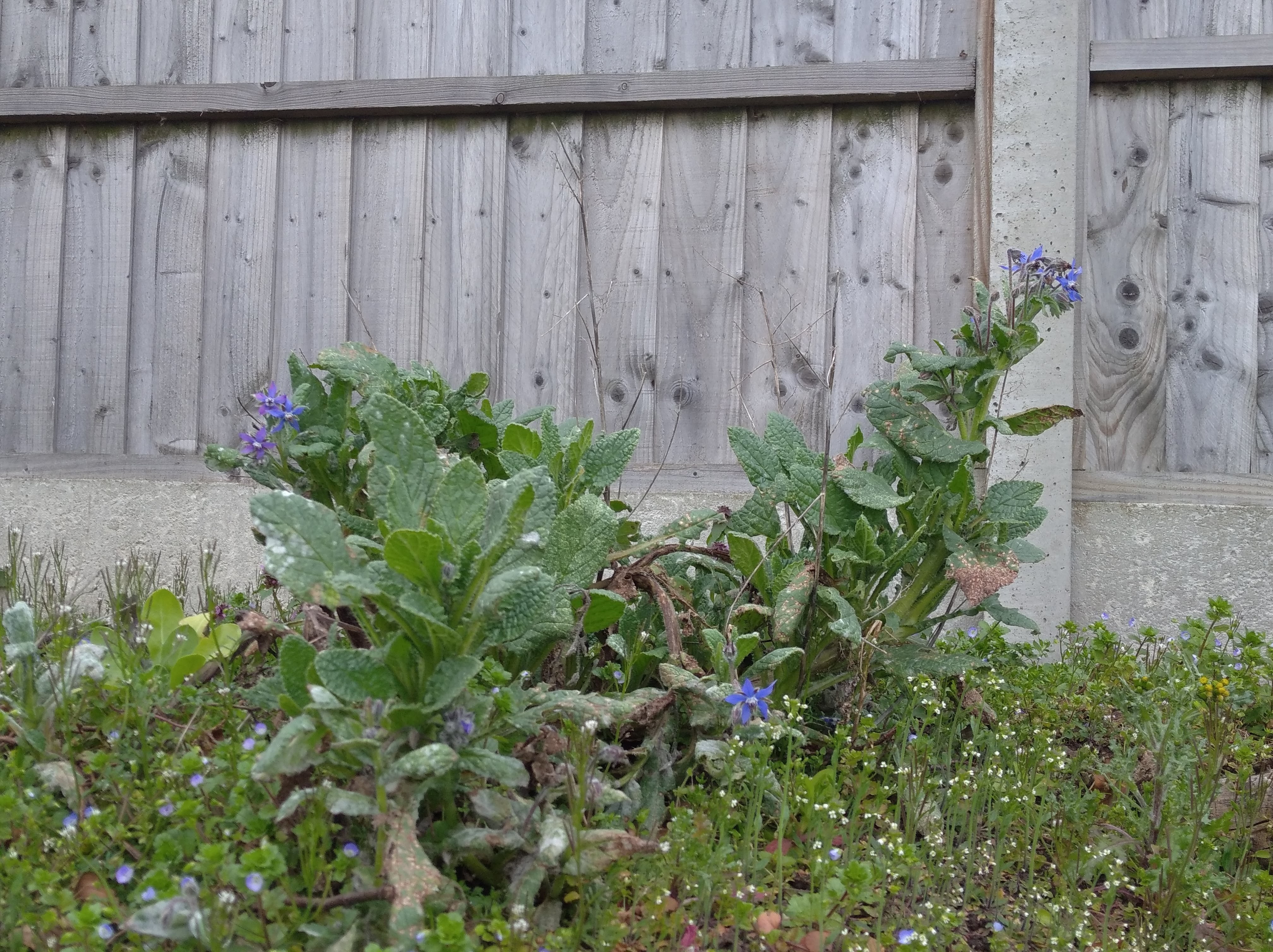

Many of these wildflowers endured several weeks underwater when the River Severn burst its banks following heavy rainfall during Storm Eunice. Worcester has a long history of flooding but floods are becoming increasingly common due to increased winter and autumn rainfall brought about by climate change. It was terrible and strange and mesmerizing to see several roads, the racecourse, the cricket ground and sports fields completely submerged for over a week at the end of February.
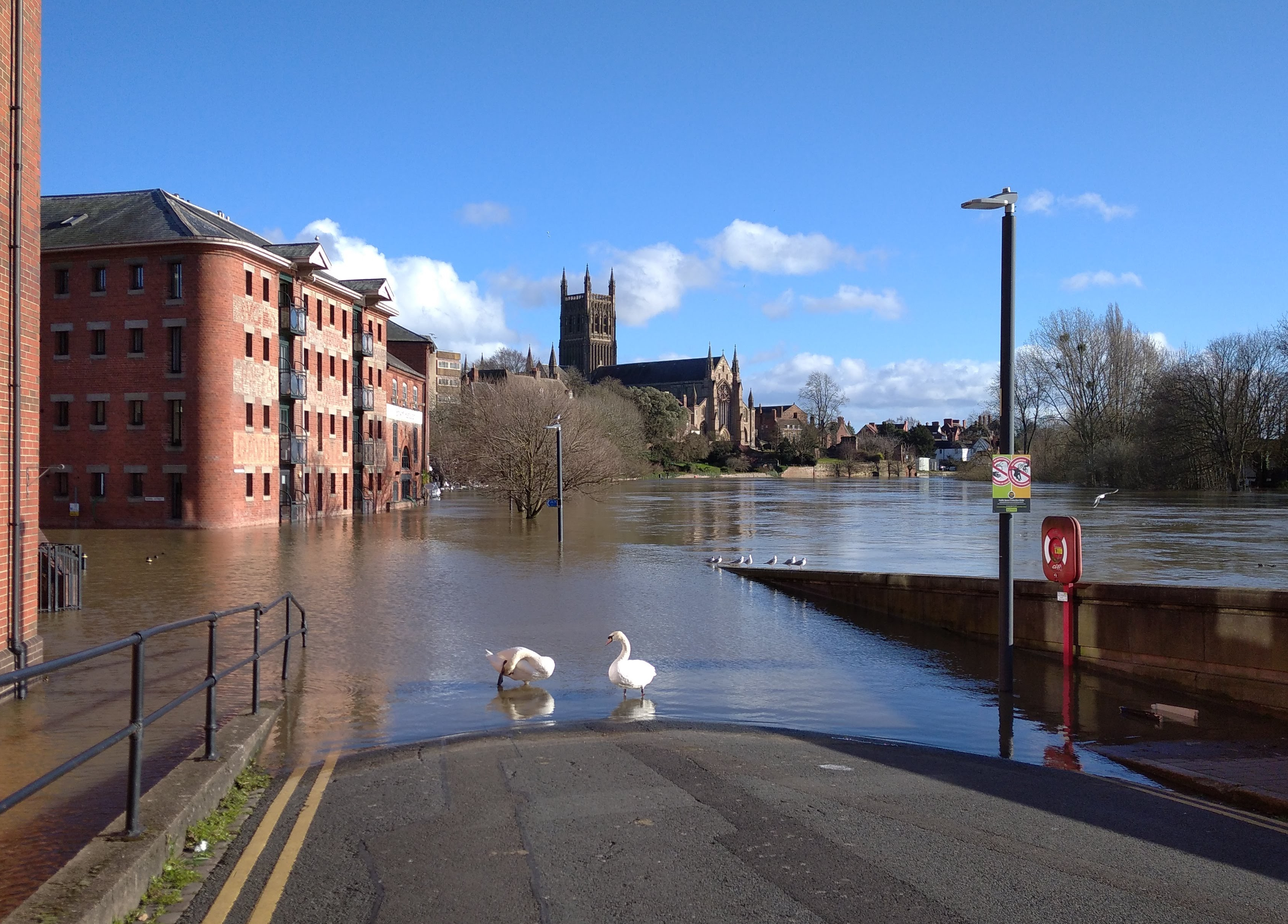


Every time I cross the River Severn, I get a pleasing or surprising sight, whether it’s swans gliding through the morning mist or my first Small Tortleshell butterfly of the year. Back in January, I had the most wonderful thrill when I saw two otters. They were zigzagging at speed upstream across the river, diving and resurfacing to playfully nip each other. I had to jog with the pushchair to keep up. In the brief moment that I could have taken a photo or video, I decided to lift Josephine up to see them instead. But she, having no idea what an otter was or in which direction she was supposed to look, sadly missed them and by the time I had finally torn my gloves off my frozen fingers and got my phone ready, the elusive creatures had vanished. So you’ll just have to take my word for it. (Note to Mr Rixon: logs cannot float upstream.)

Spring is awakening in our garden too. First came the Primroses, then the Winter Aconites and Snowdrops, closely followed by Hellebores and Squill. Now there are clumps of Daffodils, Crocuses and Grape Hyacinths brightening up every corner. Pinpricks of colour are spreading throughout the dense tangle of woody climbers atop the courtyard garden wall. A camellia bush and a magnolia tree have burst into bloom. I am attempting to create a mini meadow in the centre of the garden and on 19th March, when temperatures reached a balmy 14 degrees, I carefully planted out some Oxeye Daisy and Black Knapweed plugs that I had grown from seed into the lawn. I shall we sowing some seeds too.
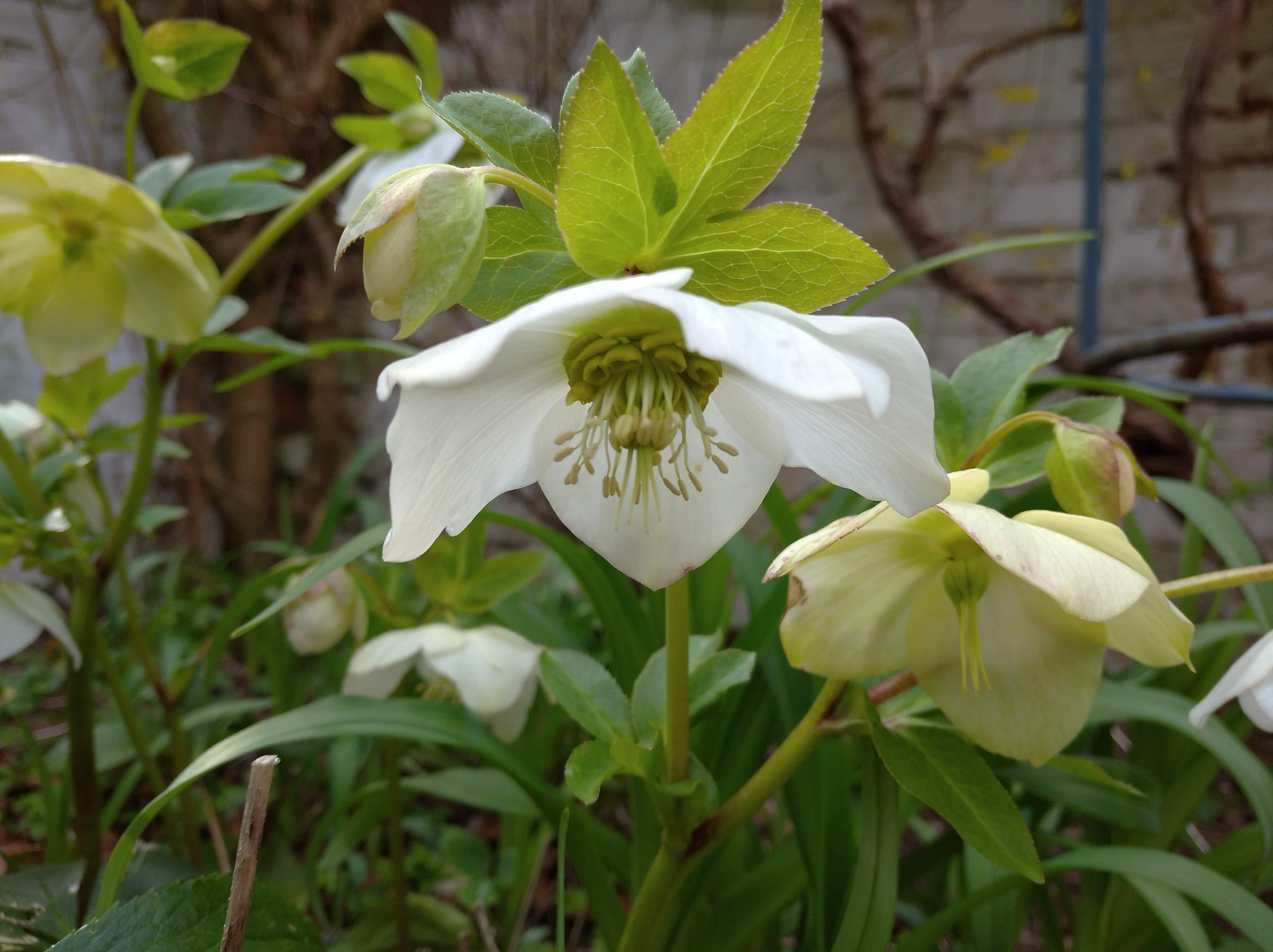




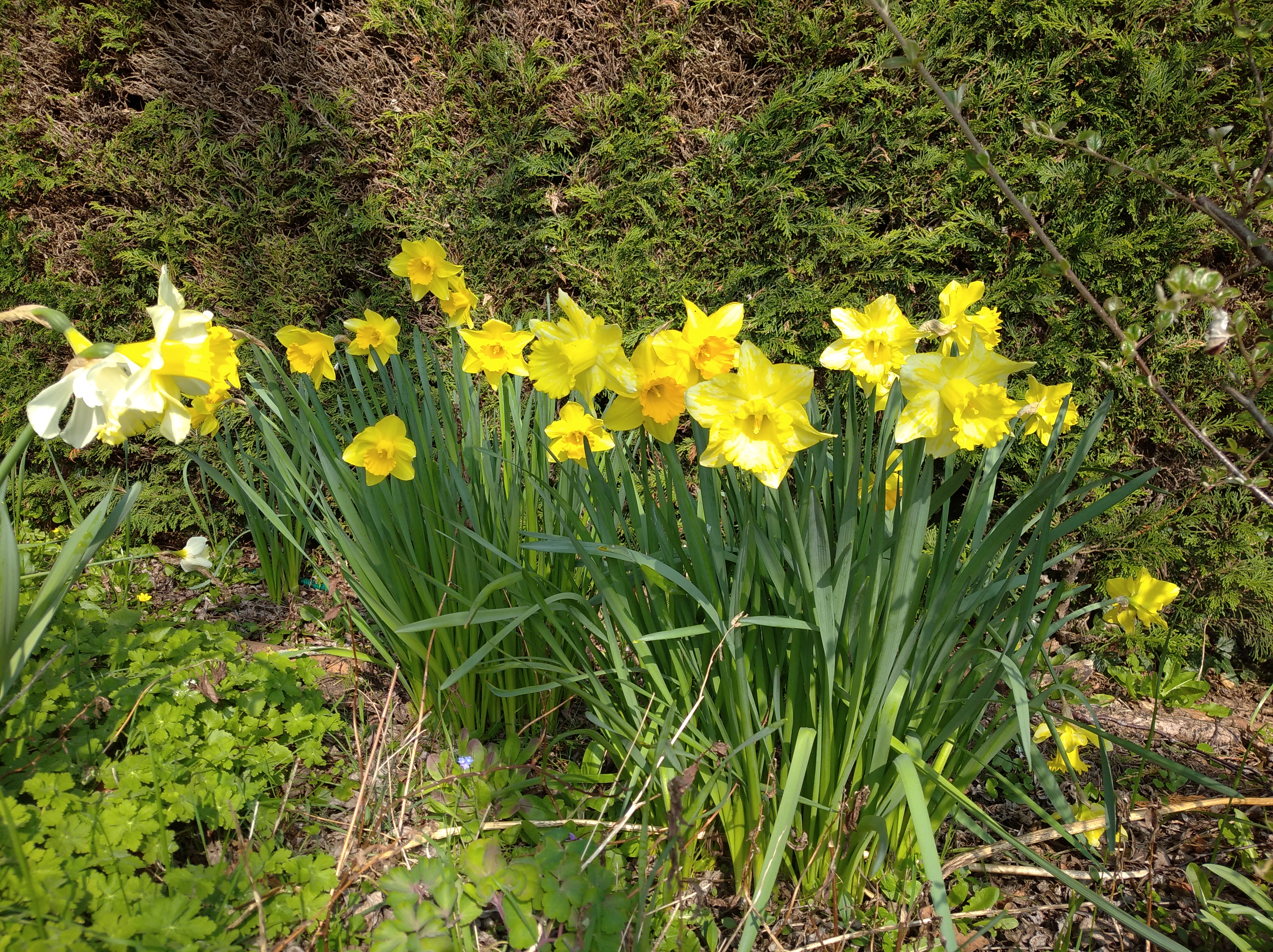
The garden birds are finally beginning to trust the bird feeders we put up in January. I must remember to clean the feeders before refilling them, particularly with bird flu on the rise. A blackbird has been busy pulling out tufts of coir from a hanging basket to build a nest. The robin whom we counted during the Big Garden Birdwatch has changed his haunting winter song for a joyful spring one, which he has been trilling from the top branch of the tallest hazel tree. I hope he (or she) finds a mate soon.
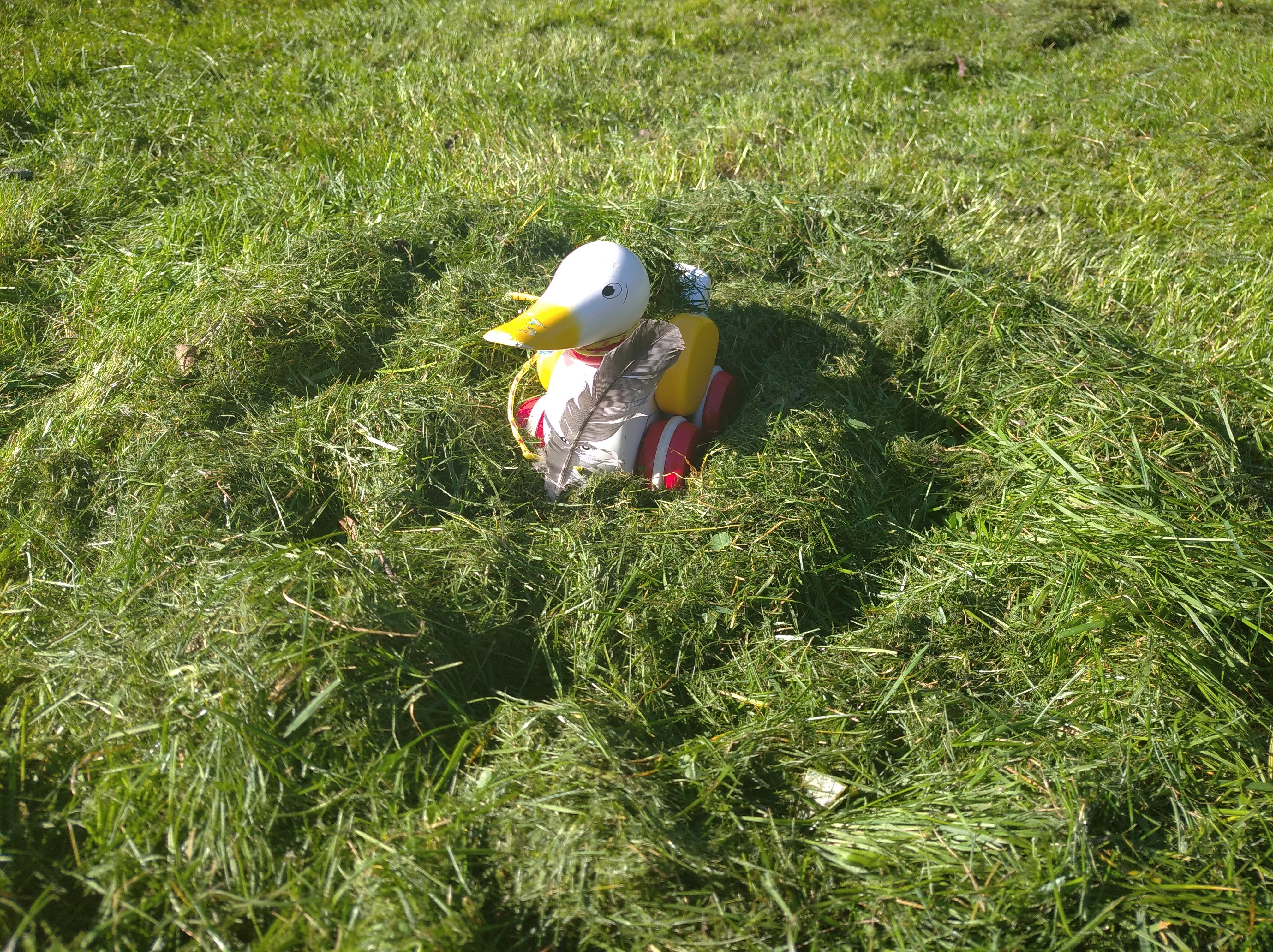
Quite aptly, I have just finished reading The Secret Garden for the first time. I feel just like Mary Lennox watching the garden come alive, clearing spaces around the overcrowded “little green spikes”, getting to know the robin, and wishing and wishing it all to be “wick”.
A smattering of violets and lesser celandine are in bloom here too. Perhaps they travelled across a corridor of roadside verges to take up residence on our lawn. The former should carry on blooming until May or June, the latter we will have to bid farewell to by the end of next month, by which time, who knows what else will have popped up?



I love your comments about the first wild flowers of spring, Charlotte! I too notice them in cracks in pavements and walls, and also how the same garden flowers appear at slightly different times according to their position – sunny or shady – as I take a daily walk or potter in my own garden.
Welcome to the Midlands! Worcester is famous for its flooding, but sadly much more frequent recently. It is amazing how the wild life must have adapted to cope – swans swimming round the buildings! It must be pretty dangerous in midstream, with trees and debris hurtling by! Climate change is a huge challenge. Being aware of all the little plants and flowers is so important – and children are good at noticing them, especially when encouraged!
LikeLiked by 1 person